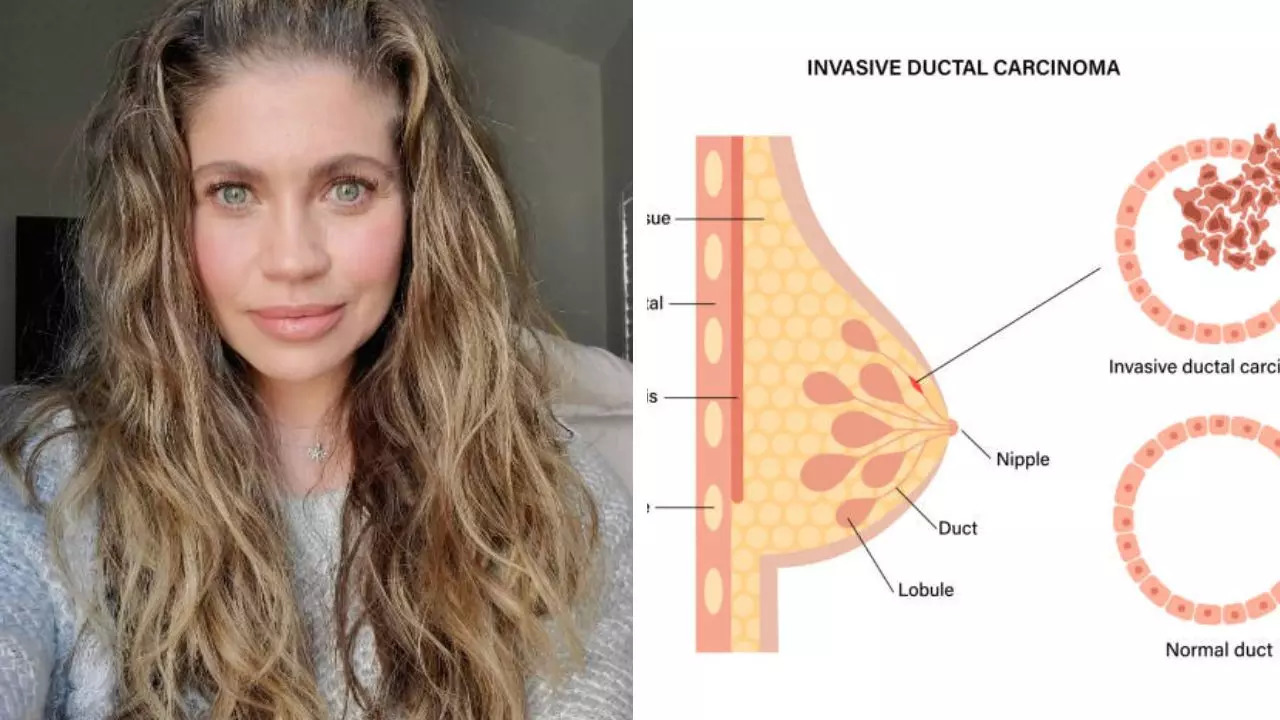Contents
Breast cancer: What is ductal carcinoma in situ – Actress Danielle Fishel suffering from cancer?
American actress Danielle Fisher recently shared her breast cancer diagnosis, revealing that she is being treated for ductal carcinoma in situ – a non-invasive early stage of cancer that occurs when abnormal cells line the milk ducts of the breast. In DCIS, the cells do not spread outside the ducts to other breast tissues, but in some cases, DCIS can become invasive and spread. DCIS accounts for about 20 percent of breast cancer cases. Read on to know more about this stage zero breast cancer.

In ductal carcinoma in situ, the cells do not spread outside the ducts to other breast tissues, but in some cases, it can spread
Actress Danielle Fishel recently shared her breast cancer diagnosis, revealing that she is being treated for ductal carcinoma in situ, or DCIS — a non-invasive, early stage of cancer that occurs when abnormal cells line the breast’s milk ducts. “It’s very, very, very early,” the 43-year-old said on her podcast. “It’s technically stage 0. Specifically, I was diagnosed with high-grade DCIS with micro-invasion. And I’m going to be okay. I’m having surgery to remove it. I’m going to go on some follow-up treatment. I’ve had to make a lot of decisions over the last couple of days.”
In ductal carcinoma in situ, the cells do not spread outside the ducts to other breast tissues, but in some cases, DCIS can become invasive and spread. DCIS accounts for about 20 percent of breast cancer cases.
According to doctors, this condition usually has no symptoms, but appears as clusters of microcalcifications on mammograms. DCIS can be treated with surgery, sometimes radiation and medication, and chemotherapy is not needed.
What are the signs and symptoms of DCIS?,
Some women with DCIS may experience signs and symptoms, including:
- Breast lumps
- Itchy skin
- Nipple Discharge
Despite this, more than 90 percent of DCIS are detected by imaging procedures such as mammograms.
What are the risk factors for DCIS?
Experts say they don’t know what causes the abnormal cell growth in DCIS, but several factors may increase your risk. Here are some of these:
- Age, especially women after 30
- Family history of breast cancer
- Menstruation before the age of 12
- Having a baby after 30 years
- Never been pregnant or breastfeeding
- onset of menopause after age 55
- personal history of breast cancer
- having dense breast tissue
- you’ve previously had radiation therapy to your breasts or chest
- Gene mutations increase the risk of cancer – BRCA1 And BRCA2
- Experts say that having risk factors doesn’t mean you’ll get DCIS and that risk factors are based solely on probability — which could increase your chances of developing the condition.
Why is DCIS called stage zero?,
According to doctors, since DCIS is a highly treatable and curable conditionThis is known as stage zero breast cancer. Doctors classify cancer into stages 0-4. Stage zero cancer appears as a cluster of tumors and is determined by where it is located, the size of the tumor and whether cancer cells have spread to other areas. The lower the number, the better the chances of successful treatment.
Although DCIS is always stage 0, the tumor can be any size and located in multiple milk ducts inside your breast. Still, the prognosis for DCIS is excellent with treatment.
Get the latest news on Times Now as well as breaking news and top headlines from across health and the world.


